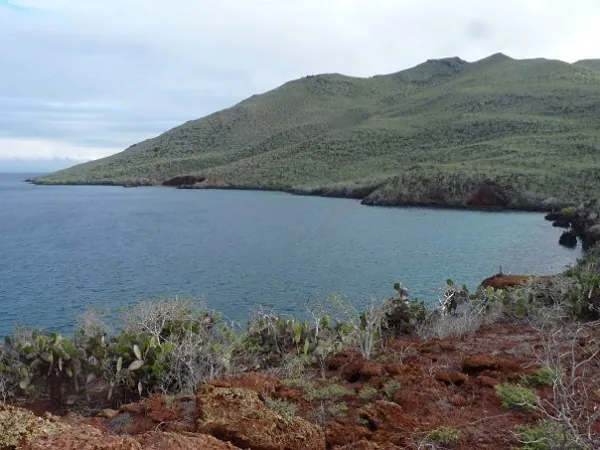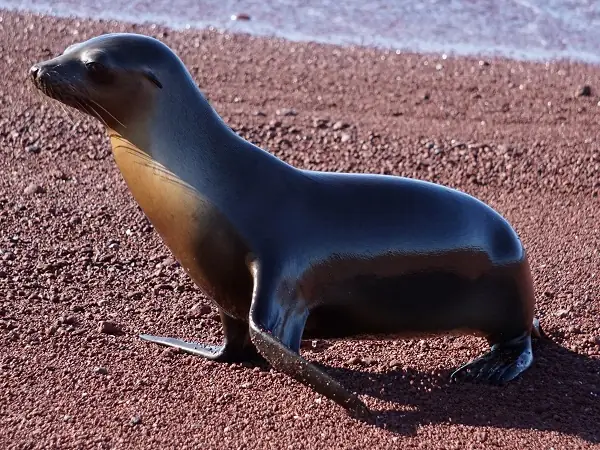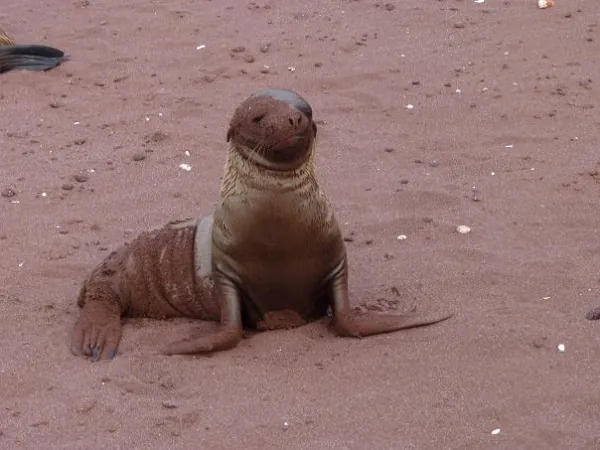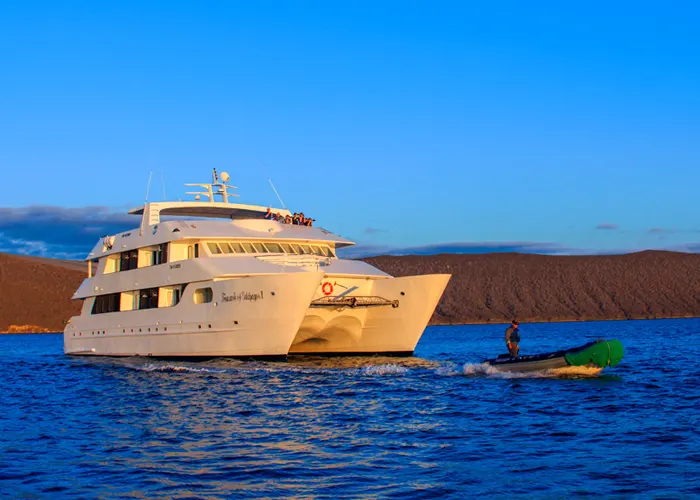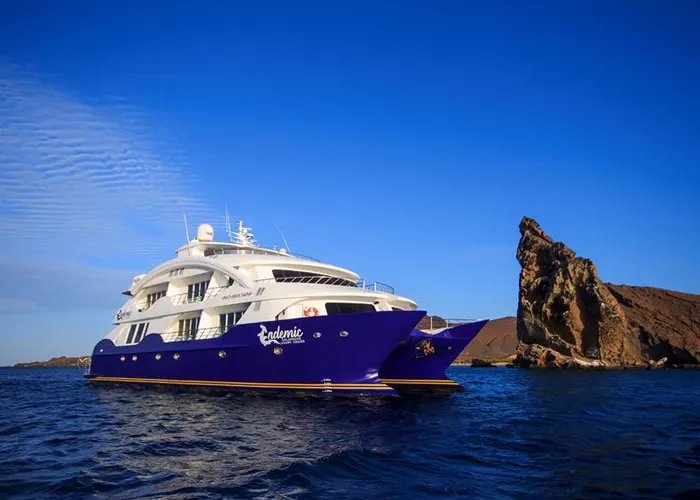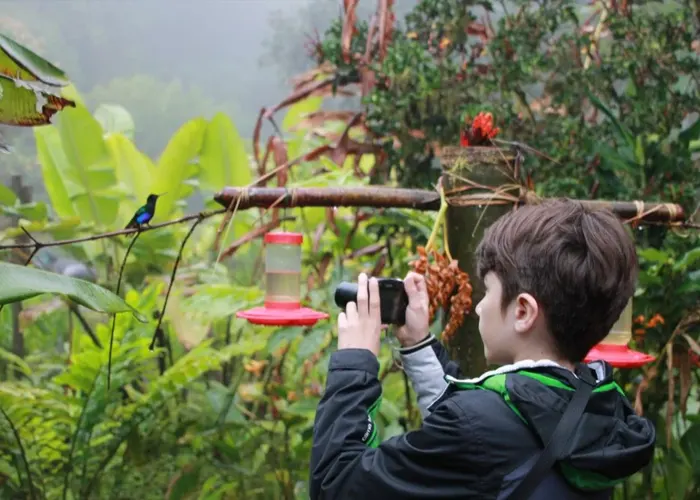RÁBIDA Island Galapagos
RÁBIDA island
Explore the Fascinating Isla Rábida: Nature in its Pure State
- Area: 4,9 km²
- Highest point: 367 m
- Population: Uninhabited
- Travel options: Cruise ship
Visitor highlights:
- Northeast coast
- Important animals and plants: Sea lions, sea lizards, brown pelicans, gannets, flamingos, Bahamian ducks, mockingbirds, Darwin’s finches, opuntia, and much more.
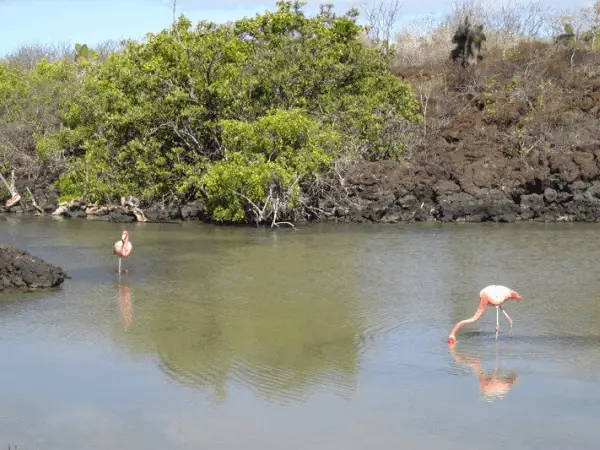
General information
The Spanish name of the island originates from the Spanish monastery of Rábida, where Columbus placed his son during his voyages to the Americas. The original English name referred to Admiral John Jervis.
Rábida is of geological interest due to its variety of rock and lava types, formed through the crystallization and cooling of magma. Characteristic of Rábida is its dark red sand, caused by iron oxide-rich volcanic scoria.
The island is relatively dry, with some saltbushes and prickly pear cacti. Except for a small beach in the northeast, the coast is characterized by cliffs.
Twice, goats were introduced to Rábida, negatively impacting the island’s ecology, but they have since been completely eradicated. A more significant ecological issue currently is the introduced rats, posing a threat to vegetation, reptiles, and birds. In 2011, an international project to eradicate the rats was initiated.
Significant as a breeding site for brown pelicans, Rábida also hosts nine species of finches.
Rábida is part of many cruises, such as those with the Seaman Journey catamaran and the Estrella del Mar, Aqua, and Natural Paradise yachts. The island is often visited together with Santiago or Bartolomé islands.
Places to visit On Rábida Island
Beach on the northeast coast
The only visitor site on Rábida is the beach on the northeast coast of the island. After a wet landing, you can already observe the sea lions frolicking in the red sand. Marine iguanas are also very likely to be present. A short path past salt bushes behind the beach leads to a saltwater lagoon. Along the path, you may even see nesting brown pelicans between the bushes. Blue-footed and Nazca boobies often perch on the rocks. In the lagoon, there are usually flamingos feeding on shrimp larvae, as well as pintail ducks and stilts.
The beach offers excellent conditions for snorkeling and swimming. Underwater, you are likely to observe sharks and manta rays, as well as colorful reef fish.

